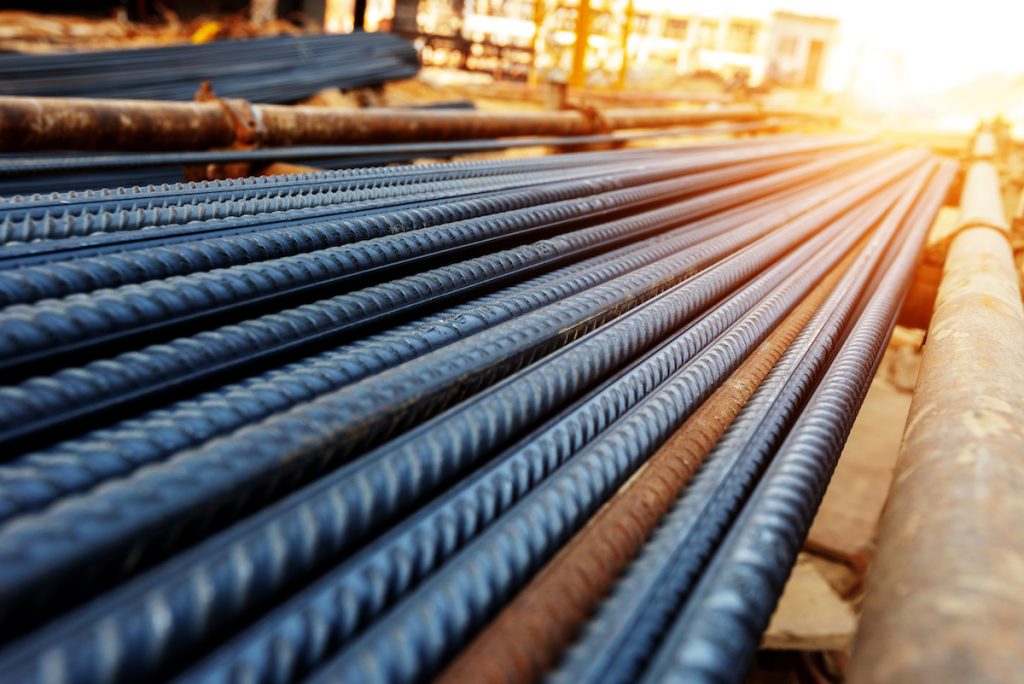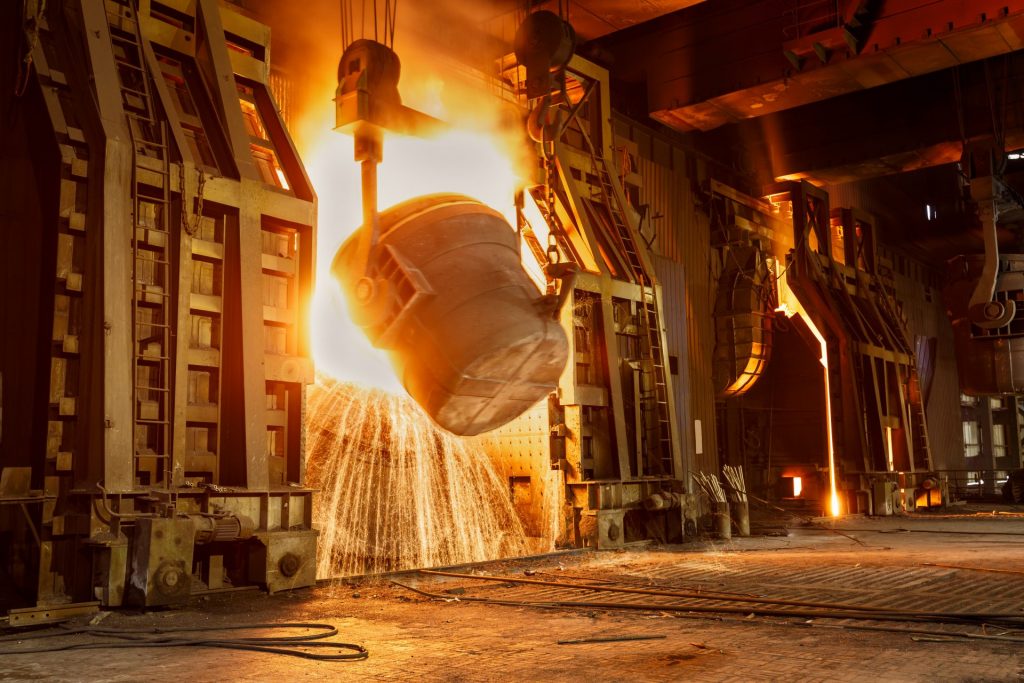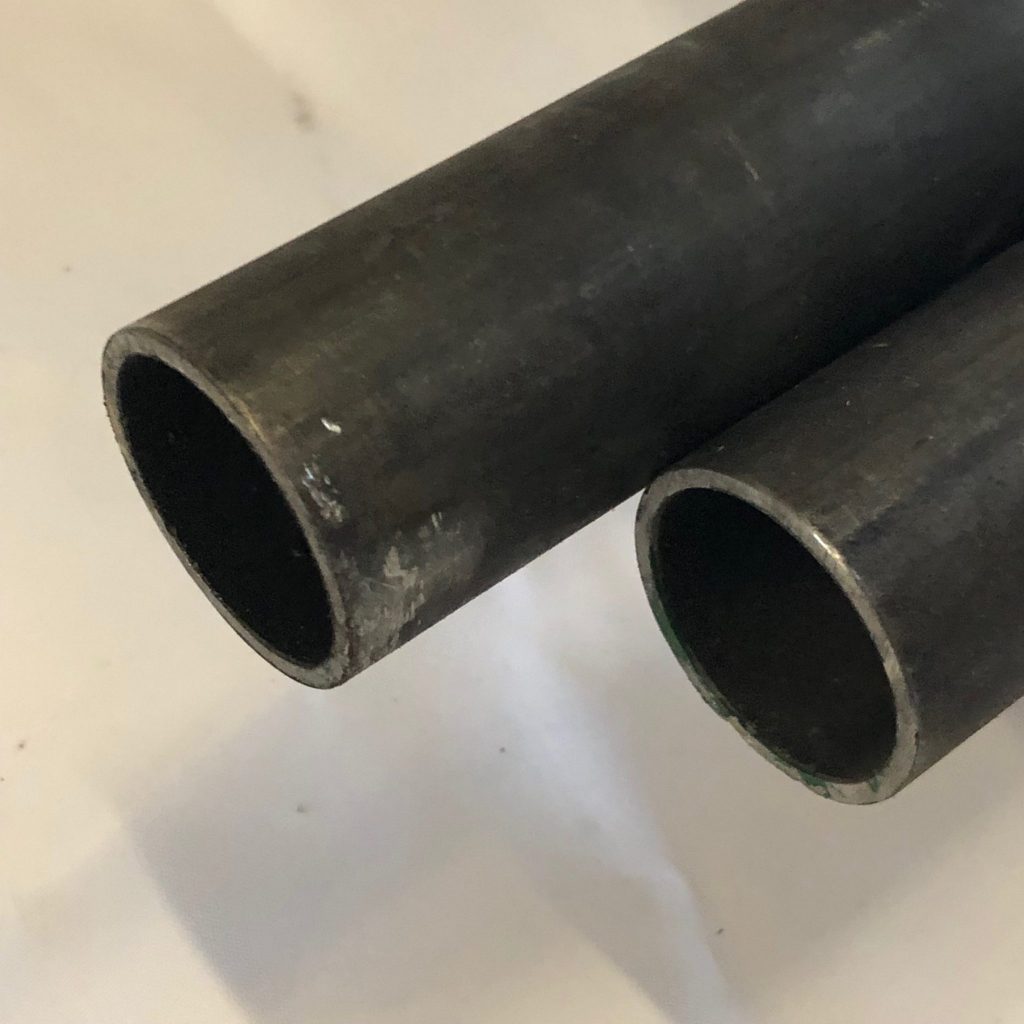What is steel, and what are its uses? You probably already have some ideas about how to answer these questions, since steel is a bedrock of our buildings, our mobility, our health, and our security. But there is much to learn about this abundant and amazing metal.
Read on for fun and functional steel facts!
How Steel Is Made
Steel is made from iron ore, which is mined from the ground. The iron is smelted in blast furnaces (which, like ships, are often named after women). Impurities are removed and carbon is added. This process helps make steel less brittle than iron. Also, various other metals can be mixed (called “alloyed” when you’re talking about metal) with the steel to make a range of products, including stainless steel and chrome-moly steel.
If you like smelters, read more here about iron and how steel is made.
History of Steel
The history of steel can be traced back almost 4000 years, to the beginning of the Iron Age. You know something’s important when a whole era gets named after it! We can thank this element for many of the advances in human technology.
This is more in the steel fun than steel facts category, but there is a medieval Germanic legend which says that a local metalsmith fed iron filings to his chickens and then forged a sword of unsurpassed strength out of their droppings.
There may be some scientific logic to this strange tale, but we can say with certainty that breakthroughs in steel production came in the late 1800s when a range of innovations helped eliminate unwanted elements from iron ore to make steel production efficient and cost-effective.
Steel as an Industry
Investors at the turn of the 20th century saw steel’s potential and helped grow the industry. In the US, Andrew Carnegie’s US Steel Corporation, founded in 1901, was the first corporation that ever launched at a value of over one billion dollars.
Today the global crude steel production is enormous: 1808.6 million tonnes for 2018. This was an annual increase of 4.6%, with production up across the globe (other than in the EU).
Check out the World Steel Figures for more steel facts.
This sector provides jobs for about 50 million people worldwide, and is an important contributor to the Canadian economy in particular. It employs more than 23,000 Canadians and adds 4.2 billion to our GDP.
The Canadian and US steel industries are deeply integrated. In 2018 over $13 billion dollars of steel was traded between our two countries.
What Is Made of Steel?
Steel is our most important industrially produced metal, making modern life possible.
It is found in:
- Buildings
- Motor vehicles
- Appliances
- Infrastructure
- Medical supplies and equipment
- Samurai swords! (and other weaponry)
- The Man of Steel
Advantages of Steel
As a metal, steel has many unique and advantageous properties. Steel is abundant, inexpensive, and high performance. It gives off no harmful emissions and is useful in situations that require high standards of hygiene. Steel can be recycled and reused repeatedly. Steel’s magnetic properties are also useful in a range of contexts. Steel doesn’t retain moisture, and can handle high heat and pressure.
Steel in Construction
Construction is one of the most important steel-using industries. More than 50% of the steel produced in the world gets used in construction projects. Buildings of all types and sizes use steel framing for strength and safety. Steel is also used as roofing and cladding for exterior walls. As mentioned above, steel’s resistance to moisture, heat, and pressure are invaluable in construction settings.
Common uses for steel in buildings include (see here for more steel facts focused on construction)
- Steel framing is strong and stiff. Framing accounts for 25% of the steel use in buildings.
- Reinforcing bars add strength and stiffness to concrete and particularly concrete foundations. Steel binds well to concrete and expands at a similar rate. Reinforcing bars make up 44% of steel use in buildings.
- Sheet products serve a wide range of purposes, such as roofing, internal walls, ceilings, cladding, and insulating panels for exterior walls. These make up 31% of steel use in buildings.
- Non-structural steel is used in many applications in buildings, such as heating and cooling equipment and interior ducting.
- Internal fixtures and fittings such as rails, shelving and stairs are also made of steel.
Types and Forms of Steel
Steel comes in all kinds of shapes and types. According to the World Steel Association, there are over 3500 different grades of steel, each possessing unique physical, chemical and environmental properties. We won’t list anything close to that here!
But there are a few very common steel forms and types:
Mild Steel
Mild Steel is a type of steel with a low amount of carbon. It is useful in the construction industry because of its ductility and malleability (it can stretch and bend without breaking), as well as affordability, weldability and machinability.
See our range here.
Cold Rolled Steel
Cold Rolled Steel begins as hot rolled steel, but is further processed in cold reduction mills. It is known for its easy formability and smooth, clean surface.
See our steel materials.
Steel Tube: ERW and DOM
Steel tube is strong and durable, and comes in a range of shapes and sizes. Electric Resistance Welding (ERW) and Drawn Over Mandrel (DOM) are two common methods for producing steel tubing.
Check out our tubing here.
Stainless Steel
Stainless steel is a steel alloy with a minimum 11% chromium content. The chromium produces a thin layer of oxide on the surface that prevents corrosion of the surface. Stainless steel has many important uses in surgical instruments, appliances, construction material, commercial and domestic kitchens, food processing plants and other industrial equipment. It really should have its own blog entry, so look for a Stainless Steel Facts entry in the future!
For now, check out our range of stainless steel materials.
Steel Recycling
Steel is a recycling superstar: it is the most recycled material on the planet, more than all other materials combined! The great thing about metals is that they can be recycled over and over without any loss of their properties or value. Nearly 40% of worldwide steel production is made using recycled materials.
Producing recycled steel uses 25% less energy than producing steel from raw materials. At the same time, producing recycled steel only creates 25% as much water and air pollution.
Since scrap metal is worth money, there is also an incentive for people to collect it. For example, automobiles have a 95% recycling rate and appliances are at 88%. The fact that steel is magnetic also makes it the easiest metal to extract from the waste stream.
The steel industry also has a long history of recycling various components of the production process, from reusing water and processing liquids to extracting other useful metals from steelmaking dust and sludge.
Recycling steel saves businesses money, creates jobs, and protects the environment (since it reduces extraction).
We hope these steel facts have been informative and possibly entertaining.



